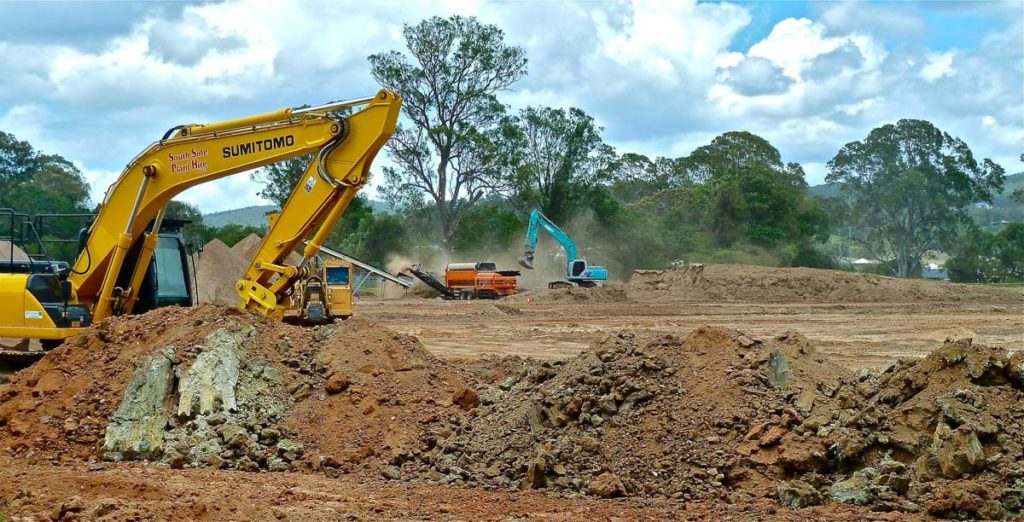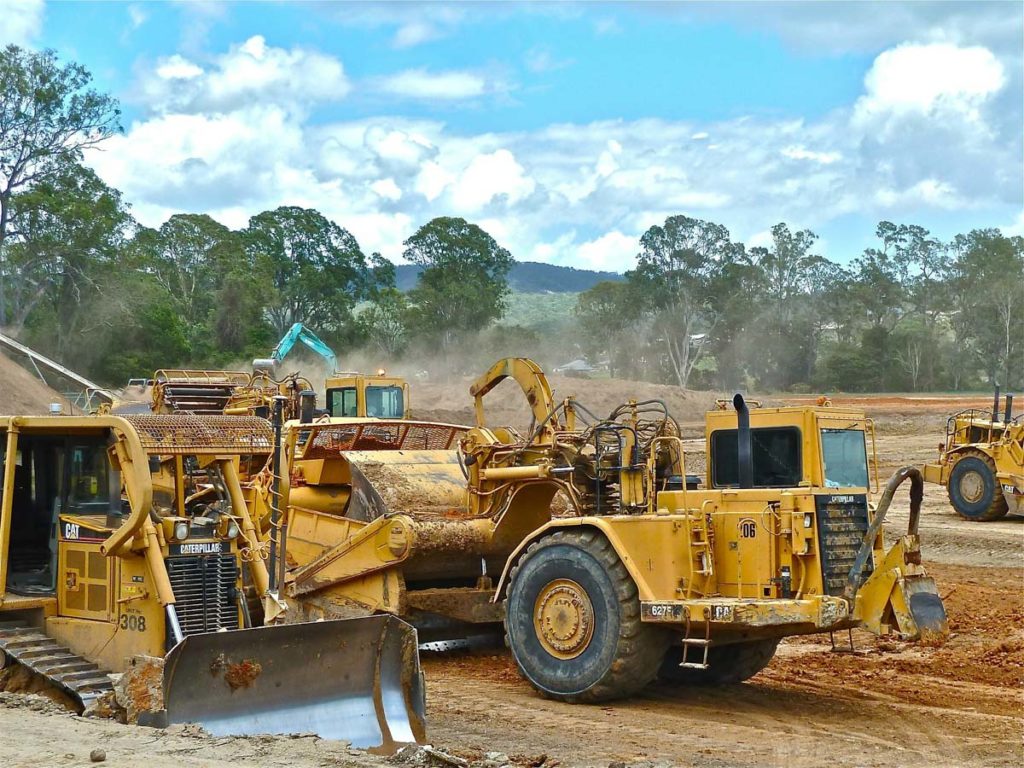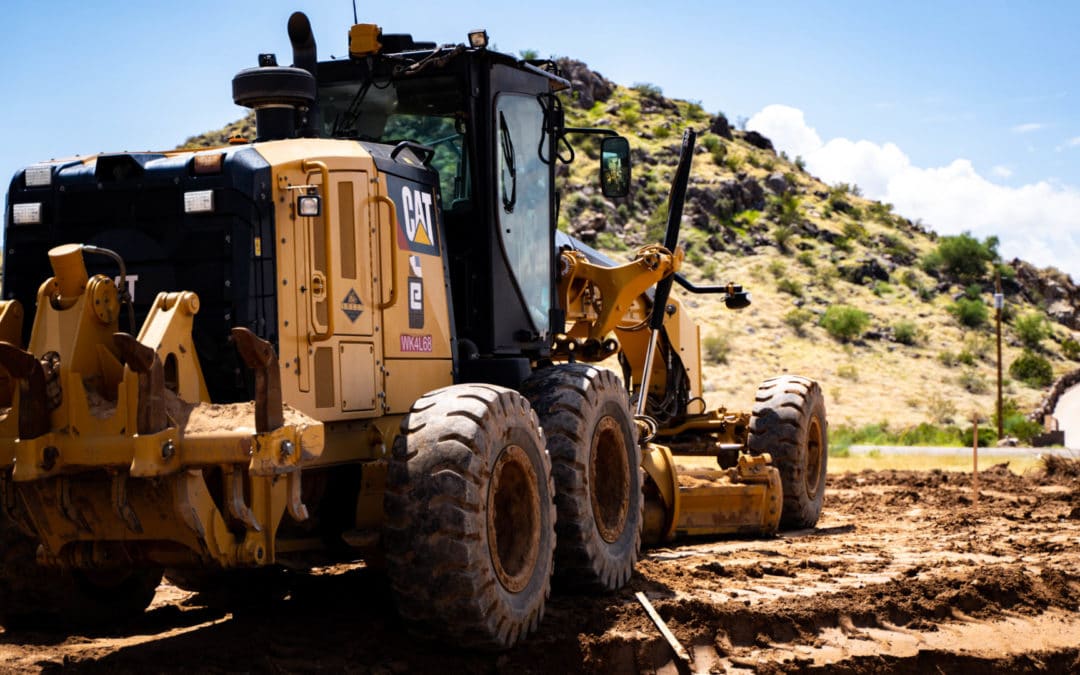A lot of planning and preparation goes on before land excavation can start. There are several construction stages to get through before digging into the earth as part of new construction. After all, construction workers can’t just go digging anywhere they please on the construction site. There have to be guidelines to show what needs to be dug, to what depth, and in what direction.
This is where setting out in land excavation comes into play.
Setting out, also known as laying out, is the process of transferring architectural proposals or designs from the architect’s drawings into the land where the building will be. This is done to give workers a sort of outline to follow during the construction.
Remember that structures have to be located and erected according to plan if they’re to be stable and serve their purpose. That is why setting out is such an important step. It helps to clearly define the outline for the excavation as well as the center lines of walls so that the construction can proceed according to plan.

Why is setting out required?
Construction projects often have to exist within a certain boundary. This makes setting out a necessary and crucial step for all sorts of construction projects to adhere to their set boundaries. This includes:
- All types of buildings from large to small scale ones and from high rise ones to simple abodes.
- Tunnels, roads, and bridges.
- Extensions being made on already existing buildings.
In some cases, setting out is often neglected and considered unimportant. This often happens in small-scale construction where the construction crew either cuts corners on getting a professional to do the setting out or they ignore the stage altogether. In the end, such projects often end up costing the land developer a lot more money in amending the construction if it doesn’t fit within the required site. Depending on the errors made, they often have to correct wrong drainage and road layouts, plot positions, among others.
Why is setting out so important?
There are several reasons why a setting out survey is crucial to a construction project:
- It guides construction workers as they begin constructing the building. When setting out, the building’s controlling points have to be delineated using pegs or stakes and marked with a waterproof substance e.g lime powder which won’t wash off in case of rain. Without it, they won’t know what goes where and how the different parts of the building should be in relation to each other.
- Setting out ensures that the construction being undertaken remains within the legal boundaries. This goes a long way towards avoiding legal disputes that may arise due to encroachment claims, property boundaries, right of access, and other issues.
- It allows the building’s structures to be placed in the correct position relative to each other, ensuring that the resulting building is the correct size and proportion, is at the right level and angles, and is in the required planned position.
- The setting out survey also allows construction to be carried out rapidly and efficiently since the construction team can see where everything goes. This means that the project can be carried out within budget and in the set out time.
Construction projects require a lot of investment in terms of labor, money, and time so it’s imperative that errors are minimized. Otherwise, they can be expensive and time-consuming to correct. Due to this, setting out should only be done by competent people with the experience and skill to get it right. Once it’s done, independent checks are required to detect if any errors were made and to correct them early on before the construction proceeds too far.

When is it done?
Setting out is often done after both a desk study and condition survey are carried out. It happens after a land clearing and grubbing team such as the one from Smoot Contracting Group does the site cleanup. This involves removing any unwanted trees, stumps, bushes, rocks, vegetation, or other obstruction from the site. For best results, the land is also leveled too.
The controlling points of the structure e.g. horizontal and vertical positions, are measured off and then marked using pegs, stakes, string lines, drill holes, and batter boards, among others. This makes them easy for the construction crew to spot and follow.
In some instances, e.g. when dealing with large-scale projects such as high-rise buildings, setting out is done multiple times as the construction goes on. This helps ensure that the project is progressing according to plan.
Who does the setting out?
As mentioned earlier, this is a delicate part of the construction process and the setting out survey should be entrusted to a competent, experienced individual. In most cases, setting out is done by a setting out engineer who may also be a qualified land surveyor or work alongside one.
The duties of this individual include:
- Keeping a site journal so that things can be referenced in the future if needed.
- Setting out the site.
- Planning and organizing the work that is to be carried out.
- Liaising between the construction team and the architects.
- Helping to resolve any technical issues that may arise.
- Running update meetings to ensure the construction team is on the same page and knows what they’re doing.
Let Us Help With Your Construction
If you’re looking for a reliable company to help in your construction project, look no further than Smoot Contracting Group. Based in Phoenix, Arizona, we have been in the construction business for 5 years and have provided earthworks and demolition services for hundreds of future construction sites. We offer services geared towards land clearing and grubbing including site grading, preparation, and demolition.
We pride ourselves on completing all jobs assigned to us on time and budget while offering top-notch customer care. We are passionate about what we do and this reflects in our work. If you’re interested in collaborating on a project, get in touch with us, and let’s build something together.

